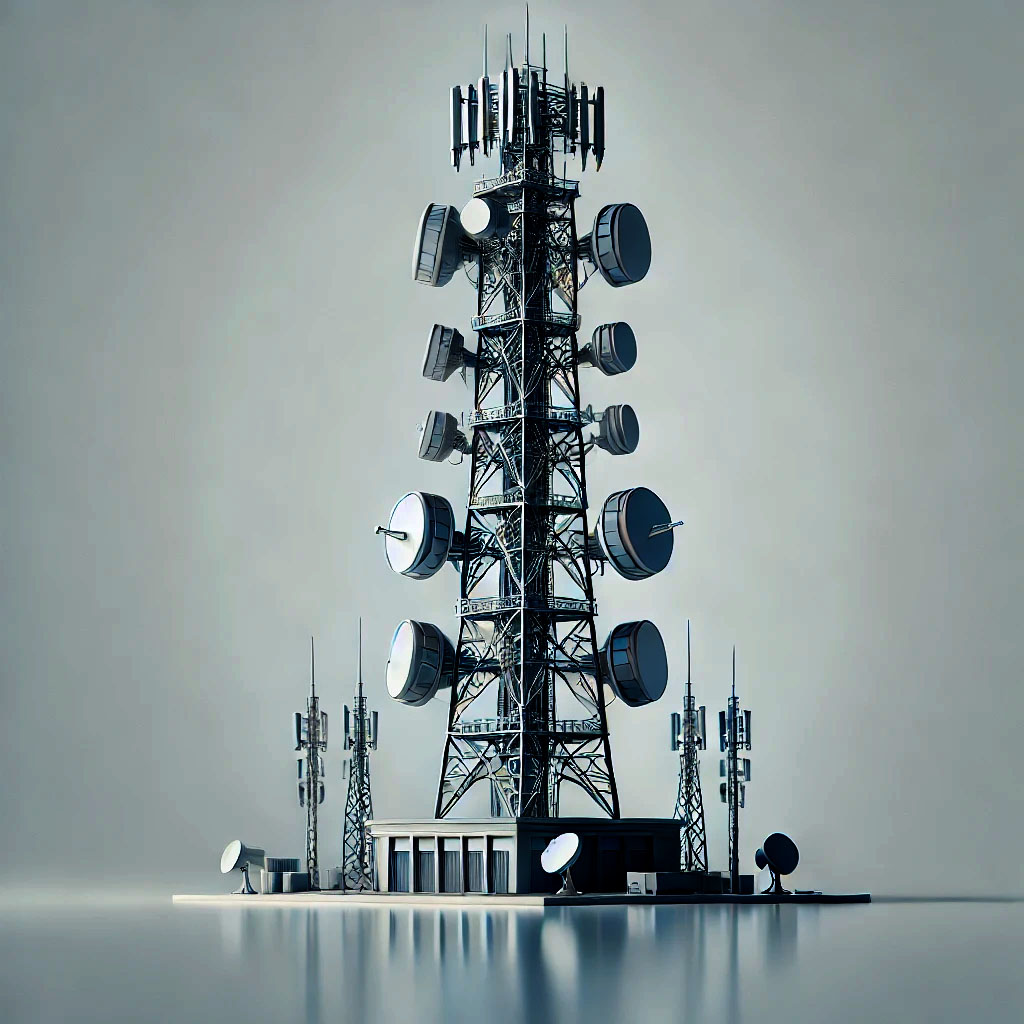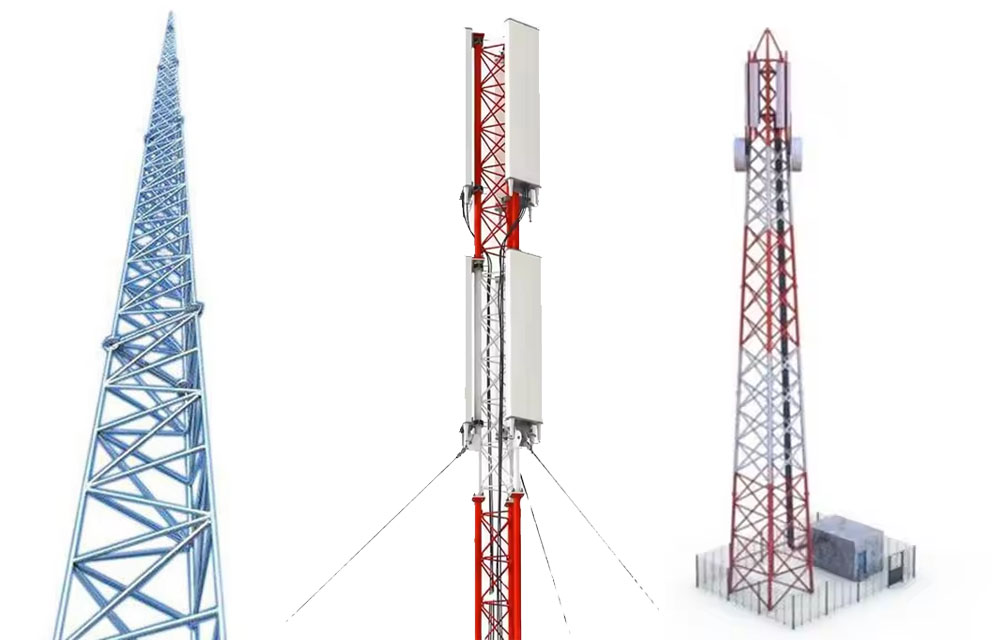Contatc
Telecommunication Towers: The Backbone of Modern Connectivity
2025-01-24
In the digital age, telecommunication towers are pivotal in enabling seamless connectivity. These towering structures serve as the backbone of global communication networks, supporting everything from mobile phone signals to internet connectivity and satellite communications. In this blog, we’ll dive deep into what telecommunication towers are, their types, functions, installation process, and how they are shaping the future of connectivity.

What Are Telecommunication Towers?
Telecommunication towers are tall structures designed to support antennas and other communication equipment. These towers facilitate the transmission of signals for a variety of services, including:
- Cellular networks (2G, 3G, 4G, and 5G)
- Radio broadcasting
- Television broadcasting
- Internet services
- Satellite communication
Their strategic placement ensures optimal signal coverage, enabling reliable communication for both urban and rural areas.

Types of Telecommunication Towers
Telecommunication towers come in various shapes and sizes, each suited to specific applications and environments. Below are the most common types:
1. Lattice Towers
Lattice towers are lightweight structures made of steel or aluminum. They are often used in areas requiring high wind resistance and offer the following benefits:
- Cost-effective
- Easy to transport and assemble
- Suitable for locations with limited space
2. Monopole Towers
Monopole towers are single, tubular structures that take up minimal ground space. They are ideal for urban settings due to their aesthetic appeal and compact design. Key features include:
- Easy installation
- Less maintenance
- Suitable for medium-range communication
3. Guyed Towers
Guyed towers are supported by guy wires, making them one of the tallest and most stable tower types. They are often used for:
- Television and radio broadcasting
- Long-range communication
While cost-effective, they require significant ground space for the guy wires.
4. Self-Supporting Towers
Self-supporting towers are free-standing structures with a triangular or square base. They are robust and can support heavy loads, making them suitable for:
- High-capacity communication equipment
- Extreme weather conditions
5. Camouflaged Towers
To blend into the environment, camouflaged towers are designed to look like trees, flagpoles, or other structures. These are commonly found in:
- Residential areas
- National parks
- Tourist spots
The Installation Process of Telecommunication Towers
The installation of telecommunication towers is a meticulous process that involves several steps to ensure efficiency and safety. Below is an overview of the key stages:
1. Site Selection and Survey
Selecting an appropriate site is crucial for optimal signal coverage. Factors considered include:
- Proximity to the target area
- Terrain and elevation
- Accessibility for construction and maintenance
2. Structural Design and Planning
Engineers design the tower based on the specific requirements of the location, such as wind resistance, height, and load capacity. Compliance with local regulations and environmental standards is also ensured.
3. Foundation Construction
The foundation is critical for the tower’s stability. Depending on the soil type and tower design, foundations can be:
- Pad foundations
- Raft foundations
- Pile foundations
4. Tower Assembly
Once the foundation is ready, the tower components are transported to the site and assembled. Modern techniques, such as modular construction, expedite this process.
5. Equipment Installation
Antennas, receivers, transmitters, and other equipment are installed and tested. This step includes aligning the antennas for optimal signal transmission.
6. Safety Checks and Commissioning
Rigorous safety checks are conducted to ensure the tower meets all structural and operational standards. Once approved, the tower is integrated into the network and becomes operational.
Applications of Telecommunication Towers
Telecommunication towers have diverse applications, making them indispensable in modern life. Here are some of their key uses:
1. Mobile Networks
Towers form the backbone of cellular networks, enabling voice calls, text messaging, and mobile internet services. They play a critical role in supporting 5G technology, which promises faster speeds and lower latency.
2. Broadcasting
Telecommunication towers support radio and television broadcasting, ensuring clear and uninterrupted signals over large areas.
3. Emergency Communication
During natural disasters or emergencies, telecommunication towers provide essential communication services, enabling coordination among rescue teams and public safety agencies.
4. Internet Connectivity
From providing broadband services to rural areas to supporting urban 5G networks, telecommunication towers are integral to the global internet infrastructure.
5. Satellite Communication
Towers equipped with satellite dishes facilitate communication between ground stations and satellites, supporting services like GPS and satellite internet.
Challenges in the Telecommunication Tower Industry
While telecommunication towers are vital, the industry faces several challenges:
1. Regulatory Hurdles
Obtaining permits and meeting compliance standards can delay tower installations, especially in densely populated or environmentally sensitive areas.
2. Environmental Impact
Concerns over visual pollution, land use, and radiation emissions often lead to opposition from local communities.
3. Maintenance Costs
Ensuring the structural integrity and functionality of towers involves regular inspections and maintenance, which can be costly.
4. Technological Advancements
The rapid evolution of communication technology, such as the transition from 4G to 5G, necessitates frequent upgrades to tower infrastructure.
The Future of Telecommunication Towers
The telecommunication tower industry is evolving to meet the demands of a connected world. Here are some trends shaping its future:
1. 5G Expansion
With the rollout of 5G networks, telecommunication towers are being upgraded to support higher frequencies and increased data traffic. Small cell towers and distributed antenna systems (DAS) are being deployed to enhance urban coverage.
2. Green Initiatives
To reduce environmental impact, the industry is adopting sustainable practices, such as:
- Solar-powered towers
- Recyclable materials
- Energy-efficient equipment
3. Integration with IoT
Telecommunication towers are becoming central to the Internet of Things (IoT), supporting smart cities, autonomous vehicles, and industrial automation.
4. Remote Monitoring and Maintenance
Advancements in remote monitoring technologies allow for real-time tracking of tower performance, reducing downtime and maintenance costs.
5. Camouflaged and Aesthetic Designs
To address community concerns, camouflaged towers and aesthetic designs are becoming more common, ensuring harmony with the surrounding environment.
Conclusion
Telecommunication towers are the unsung heroes of modern communication, enabling everything from mobile connectivity to satellite communication. As the world becomes increasingly reliant on digital technologies, these towers will continue to play a pivotal role in bridging the gap between people, businesses, and governments. Despite the challenges, innovations in design, sustainability, and technology are ensuring that telecommunication towers remain at the forefront of global connectivity.

Hey, I’m Chunjian Shu
"X.Y. Tower: Reliable, innovative solutions for high-quality towers and electrical equipment with professional service.
